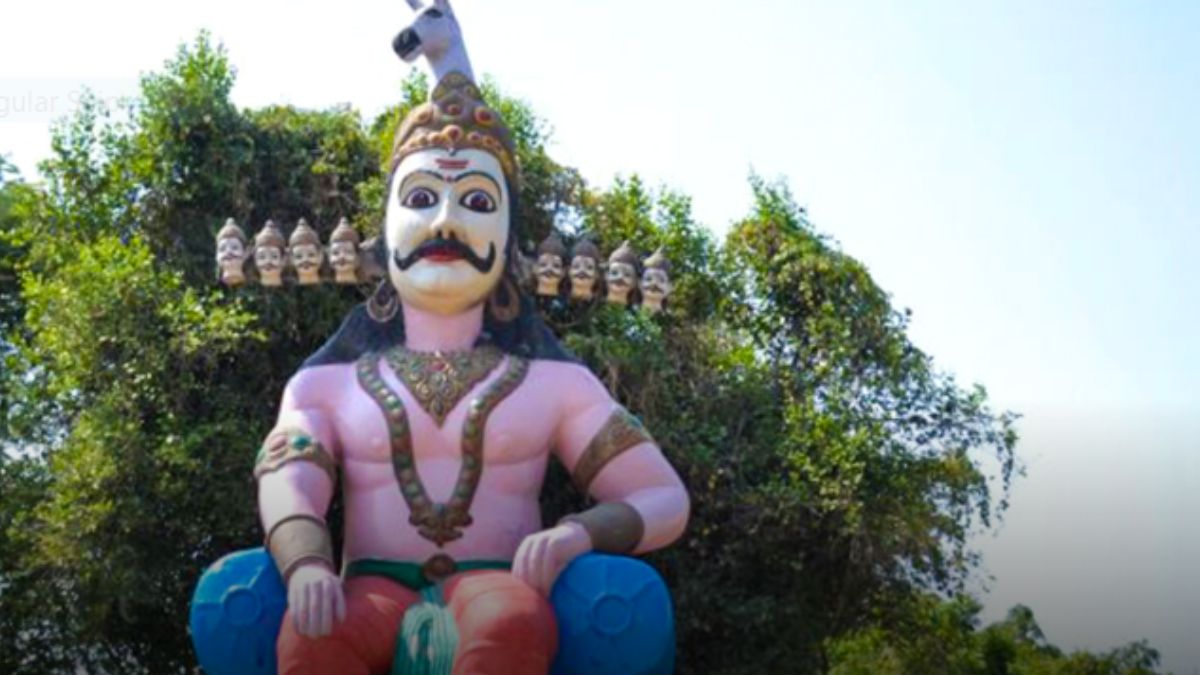In India, Dussehra commemorates the day that Lord Rama vanquished Ravana. It’s the time of year when devotees burn an image of Ravana to symbolise the triumph of good over evil. While the nation as a whole is preoccupied with celebrating Lord Rama’s victory, Ravana is adored rather than burned in the city of Mandsaur in Madhya Pradesh. Mandsaur holds a unique and intriguing connection to Ravana.
Why The City Of Mandsaur Worships Ravana
Ravana, it’s a name synonymous with villainy in Hindu mythology. Ravan is depicted as a complex character with great intelligence, physical prowess, and a deep devotion to Lord Shiva. His ten heads symbolise his vast knowledge and wisdom. However, his abduction of Sita and his subsequent battle with Lord Rama have made him one of the most reviled figures in Indian mythology.
Mandsaur, though not as well-known as the cities of Ayodhya or Lanka in the Ramayana, plays a crucial role in the saga of Ravana. The village is thought to be the hometown of Mandodari, the wife of Ravana. Ravana is acknowledged as the son-in-law because she is regarded as the town’s daughter. Due to this, Ravana is not burned at the stake in the town instead receiving a tribute from the populace as they briefly turn out their lights.
In a certain area of the town, there is also a statue of Ravana. In India, historically, married women cover their heads in front of their in-laws. This is the case when they are passing that way.
And Mandsaur’s connection to Ravana doesn’t stop here. Two km from Mandsaur town, in Khilchipura, is a temple to Kuber, the deity of wealth. According to legend, this is the only location where Kuber and Shiva coexist, except Kedarnath.
The story of Ravana, while often portrayed as a tale of good versus evil, reveals the complexities and nuances of Indian mythology, where even a demon king can be revered as a symbol of devotion.
Also Read: Just 60 KM Away From Gwalior, There Is A Colosseum In Mitawali Just Like The One In Rome
However, There’s More To Mandsaur
The mythological connection between Mandsaur and Ravan is not the only reason the city is historically significant. Mandsaur has a rich and storied past dating back centuries. It is one of the lesser-known treasures of central India, hidden away in the northwest of the state of Madhya Pradesh, close to the state’s border with Rajasthan. There are numerous religious and archaeological sites in the district bearing the same name.
Numerous archaeological structures in the area, such as the Pashupatinath Temple and the Sun Temple, both of which date to the 10th century, serve as reminders of the region’s historical significance. The historic temple honouring Shiva in his Pashupatinath avatar is the main draw of Mandsaur town. Numerous interpretations have been made of the eight-headed idol, which is separated into two sections: four above and four below. The primary entry is located through the western gateway of the temple, which has four doors facing the four cardinal directions.
One of the most celebrated festivals in Mandsaur is the Mandsaur Festival or Gandhisagar floating festival, which brings together people from all walks of life to celebrate the city’s heritage.
So, when are you making the trip to Mandsaur?
Cover image credits: Website/MP Tourism
For more such snackable content, interesting discoveries and latest updates on food, travel and experiences in your city, download the Curly Tales App. Download HERE.
Good news! We are on WhatsApp! Subscribe to Curly Tales WhatsApp Channel to stay up-to-date with exclusive content and BTS. Join HERE.

